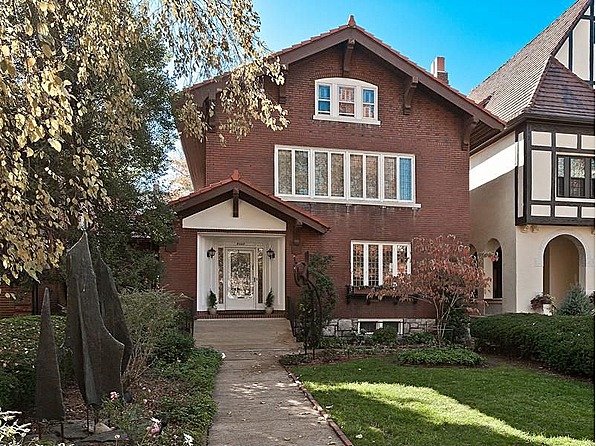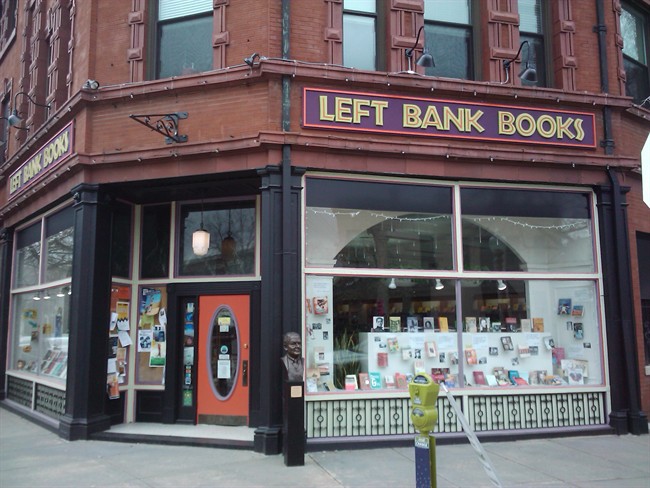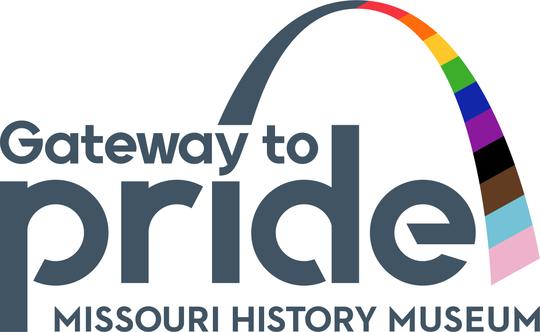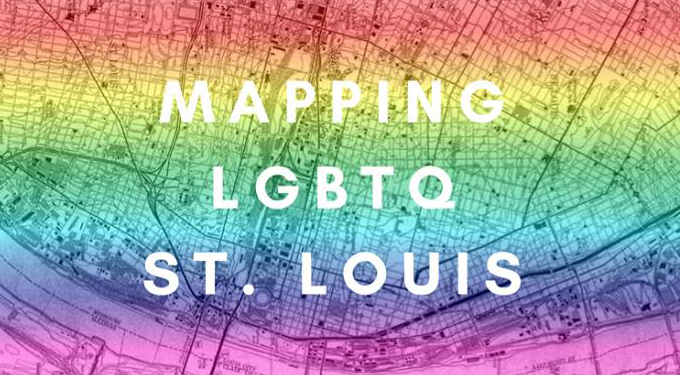CWE Tour
The Central West End (CWE) is St. Louis' most historic “gayborhood.” The LGBT community is credited with the urban renewal of this area in the 1970s. Through the 1990s, the CWE was the main hub of LGBT life in St. Louis and the location of the city's early annual Pride events. This tour was researched and created by Ian Darnell, Project Historian.

600 N. Euclid Ave.
Trinity was one of the first local religious institutions to open its doors to lesbians and gays. The Mandrake Society - St. Louis’s first homosexual liberation organization - met here for several years after its founding in 1969, and it was an early “Oasis Congregation.” Today it is a meeting place for Growing American Youth and Pride St. Louis.

Tennessee William’s Apartment
4631 Westminster Place (Private Home)
Gay playwright Tennessee Williams (1911-1983) spent much of his early life in St. Louis and attended the University of Missouri and Washington University. He lived for a time in this apartment.

William S. Burroughs Home
4662 Pershing Ave. (Private Home)
The author of the "Naked Lunch" and other works grew up in the neighborhood.

Left Bank Books
399 N. Euclid Ave.
For decades, this independent bookshop has served as one of the neighborhood’s cultural centers. It has also long offered a wide selection of feminist literature and queer-themed books.
In the 1970s and early ’80s, it was one of the sites of distribution for Moonstorm, a publication of St. Louis’s Lesbian Alliance.

St. Louis’s First LGBT Community Center (second location)
4940 McPherson Ave. (Private Home)
In the mid-1970s, the Metropolitan Life Service Corporation (later called the Midcontinent Life Service Corporation), a secular offshoot of the MCC, operated “the Center” as a place for lesbians and gay men to socialize outside of bars. The center first operated above a storefront at 4746 McPherson. The center raised funds to buy a second space just down the street that boasted a library and a snack bar and hosted discussion sessions, concerts, classes, and other events. The MLSC also ran the Gay Hotline, offered counseling services, and published a newsletter called Prime Time.

The Metropolitan Community Church
5108 Waterman Blvd. (Private Home)
The MCC first emerged in St. Louis in 1973 under the leadership of the Rev. Carol Cureton. Originally meeting at the Berea Presbyterian Church in Midtown, the MCC relocated to this old home in the Central West End in December 1974, becoming the first homosexual group in Missouri to own its own facilities. In 1977, lesbian and gay St. Louisans mobilized against Anita Bryant’s ultimately successful campaign to repeal a gay rights ordinance in Dade County, Fla., and held a mass rally here.

Herbies’ Disco
1 Maryland Plaza (now Drunken Fish Restaurant)
In the 1970s, a hip crowd flocked to this two-story disco and restaurant. Disco music and chic attire were the orders of the day. The area around Herbies’ was the epicenter of the Central West End’s LGBT life and the annual raucous Halloween street parties. The largest of these, in 1983, attracted an estimated 50,000 revelers.
Other favorite CWE LGBT club haunts included the Bijou, Bottom of the Pot, Brandy’s, City Cousin, Earl of Sandwich, Loading Zone, Pleasant Pheasant, Potpourri, and the Silly Goose.

Washington University Medical Center
S. Euclid Ave. & Forest Park Ave.
In 1968, physicians here treated a fifteen-year-old “Robert Rayford.” for a mysterious illness. Believed to be homosexually active and likely a prostitute, he died following the apparent collapse of his immune system after more than a year of hospitalization. Two decades later, scientists determined that Robert R. suffered from AIDS, making him the first confirmed victim of the disease in North America. Today, WU is a national leader in HIV/AIDS research and treatment.

Forest Park
In the late 1960s, Laud Humphreys, a Ph.D. candidate in sociology at Washington University, conducted research here that would lead to his landmark book Tearoom Trade: Impersonal Sex in Public Places. Humphreys discovered that a majority of the men who engaged in anonymous male-male sex in the park’s restrooms were married and living with their wives. In 1993, Mayor Freeman Bosley Jr. spoke at the pride festival in the Park and later announced the appointment of Laura A. Moore, St. Louis’s first openly gay city official. This marked the start of a new era of visibility and political power for the region’s LGBT community. The park has been the site of many gay related "cruising/lewd behavior" arrests and several murders. Forest Park and the nearby Chase-Park Plaza have also been the sites of several HIV/AIDS fundraisers and numerous other LGBT events.





